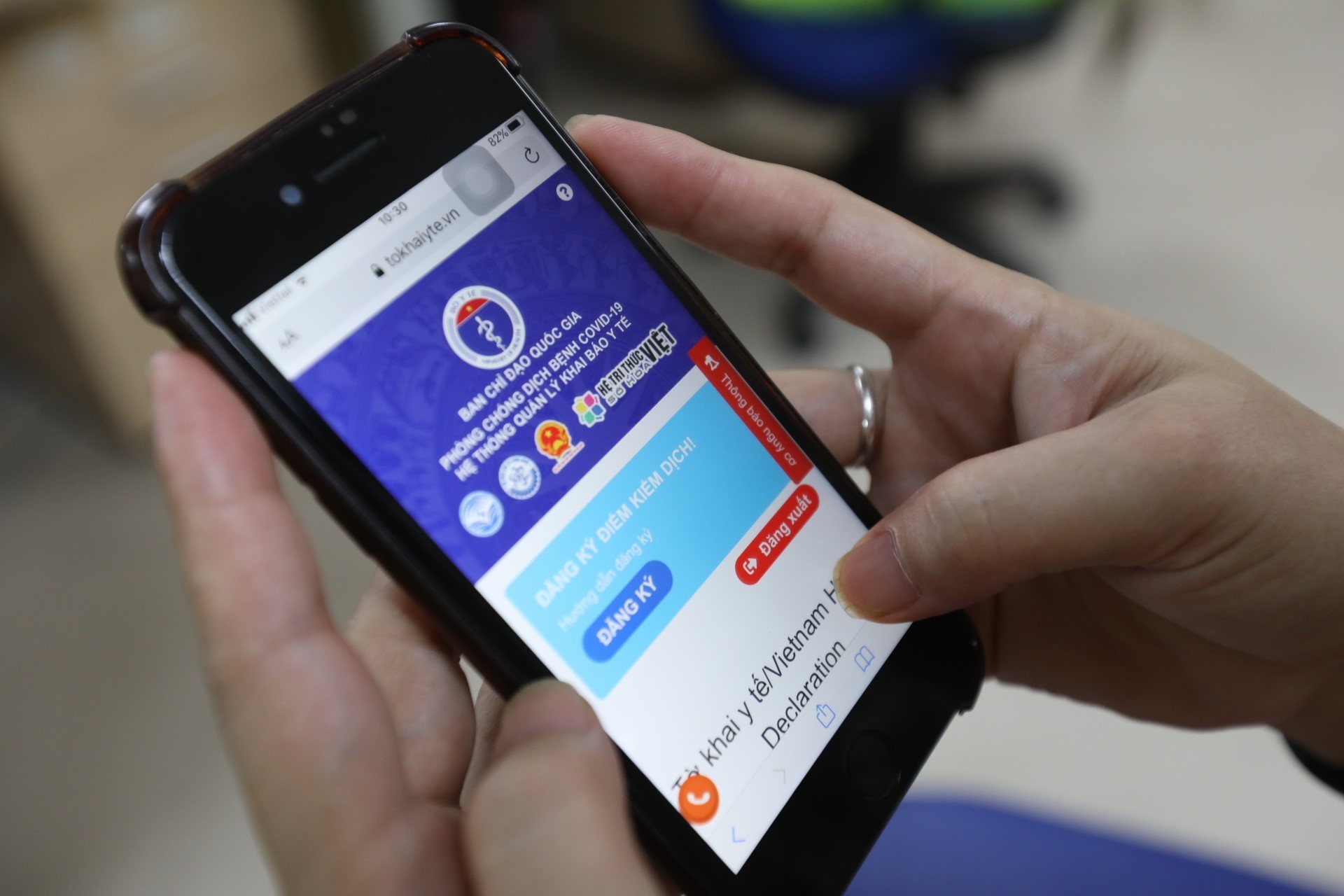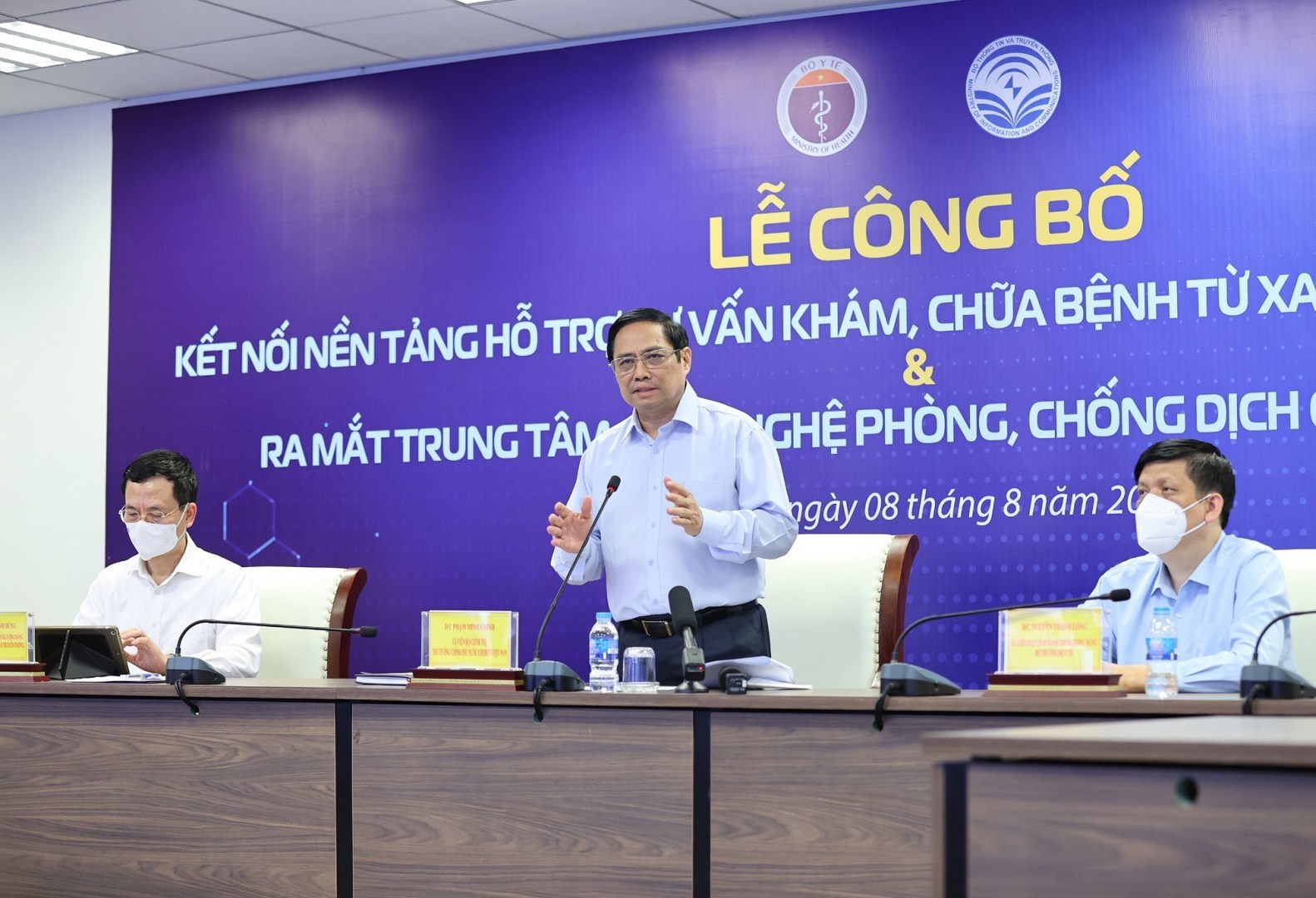
COVID-19 – A TURBO BOOST TO ADVANCE DIGITALISATION IN HEALTH SECTOR

COVID-19 – A TURBO BOOST TO ADVANCE DIGITALISATION IN HEALTH SECTOR
Vietnam’s health sector has been gradually adopting digital transformation for a number of years, but the COVID-19 pandemic has sparked a technological revolution in healthcare systems across the nation that might otherwise have taken decades.
Initial progress in health information system
Paper-based medical records are a mainstay in Vietnam’s health sector, and only 32 hospitals use electronic health records (EHRs).
Under a Government plan, 95 percent of the population will have EHRs by 2025. The Ministry of Health said EHRs started connecting hospitals and health facilities across the nation in July 2021. Thanks to this shared source of data, patients do not have to bring printed records with them for follow-up examinations. The data is also intended for doctors to track patients’ progress, thus facilitating future medical care.
The Quang Ninh Obstetrics and Paediatrics Hospital in the northern province of Quang Ninh is an outstanding example, having already switched from paper records to EHRs. The move has made it easier for both doctors and patients to access their medical histories.
At the Hanoi Cardiology Hospital, EHRs are being used in COVID-19 treatment wards. Prof. Dr. Nguyen Sinh Hien, director of the hospital, said it helped reduce the risk of COVID-19 spreading among both doctors and patients.

Besides EHRs, the development of a wide range of applications in the health sector since COVID-19 broke out in Vietnam at the start of 2020 is a vivid illustration of the sector’s digitalisation progress.
Applications such as Ncovi that supports daily health declarations, Bluzone that detects close contact with COVID-19 patients, and VHD (Vietnam Health Declaration) for people passing through airports and border gates, have become an integral part of the country’s COVID-19 prevention and control strategy.
Through these applications, the Ministry of Health has sent five billion messages to users to update them on the pandemic, as well as inform them about the latest regulations for pandemic prevention.

Having received such messages from the Ministry of Health via the Zalo and SSKDT (e-health) apps, Do Thanh Mai, a resident of Thanh Xuan district, Hanoi, said she felt more secure receiving official information about the pandemic, rather than word of mouth. The SSKDT app also helped Mai to access remote medical consultation amidst the complicated developments of the pandemic.
Spurred on by fears of contagion in wards and waiting rooms, health practitioners are shifting from traditional face-to-face meetings to patient consultations by telephone or online video apps like SSKDT.
Thanks to this rapid digital transformation, people can now book appointments via phone or online at top hospitals such as the Viet Duc Friendship Hospital, Cho Ray Hospital, the National Hospital of Traditional Medicine, and the Hanoi Cardiology Hospital without having to queue up in crowded waiting rooms.
A dose of telemedicine saves life
Nearly a decade ago, a project to address understaffing and overcrowding at central hospitals across the country was approved, highlighting the role of telehealth.
Telehealth was pioneered in Vietnam 15 years ago at the Viet Duc Friendship Hospital under a project to revolutionise the sector by migrating healthcare consultations from central hospitals to satellite clinics through the use of technology, thus enhancing the capacity of grassroots-level medical facilities and easing the burden on central hospitals. At that time, six satellite clinics in the north were connected with central hospitals with a view to fine-tuning local practitioners’ expertise.

According to Prof. Dr. Tran Binh Giang, director of the Viet Duc Friendship Hospital, hundreds of meetings were held each week at the hospital to provide consultations and transfer technology to 23 satellite clinics between 2013-2020. After telco giant Viettel’s telehealth platform was adopted, the number of satellite clinics increased to more than 100, with many district-level and private hospitals registering to become satellite clinics of the Viet Duc Friendship Hospital.
Statistics from the Ministry of Health show the doctor-population ratio in Vietnam stands at around 8:10,000 against the World Health Organisation’s recommended 1:1,000. This means people living in remote and rural areas have worse access in terms of distance to healthcare services. In this context, telehealth has become the key to solving physician shortages.
Giang said telehealth has extended health consultations from central hospitals to remote areas where there are few quality doctors, helping patients access proper medical care at local hospitals rather than travelling to central hospitals.
“A man in Dien Bien province was in a critical situation with bleeding in the brain after suffering a traumatic head injury. Doctors in Dien Bien province successfully performed complicated cranial surgery after receiving consultation from top surgeons at Viet Duc Friendship Hospital through the telehealth platform”.
The patient would not have survived if he had been taken to Hanoi 600 kilometres away, while the remote medical consultation took only 30 minutes to save his life, Giang added.
“Telehealth is a revolution in the medical industry”
Prof.Dr. Nguyen Sinh Hien, Director of the Hanoi Cardiology Hospital
At the Hanoi Cardiology Hospital, telehealth has also been deployed to provide training for doctors at district-level hospitals.
“Telehealth is a revolution in the medical industry. Years ago, it took me around 15 years to become the head surgeon. However, thanks to this technical support, the time has shortened to 2-3 years for a trainee doctor,” Prof. Dr. Hien told Vietnam News Agency.
A total of forty training sections for grassroots-level doctors have been organised by the Hanoi Cardiology Hospital through the telehealth platform since April 2020, Hien said, highlighting cardiothoracic surgery consultations were provided to treat 12 patients with congenital heart disease at Phu Tho General Hospital, and interventional cardiology consultation for five patients at Thai Binh General Hospital.
“The success of heart surgery is largely decided by the doctors. Online support from leading experts helps doctors at grassroots levels feel more confident of handling any complications during surgery and can be the difference between life and death.”
Of note, during the COVID-19 pandemic, telehealth has played an important role in ensuring the safety of doctors by limiting the number of different clinics they are required attend.
Telehealth has been used in the health sector for years now, but when the COVID-19 pandemic hit, social distancing became the new normal, and people turned online for many activities, including medical consultations. Besides the convenience, telehealth also reduces the risk of contracting COVID-19 for both physicians and patients by allowing people to consult doctors through smart electronics devices from the comfort of their homes.
Remote healthcare services started being provided via the Doctor4U platform for residents in Hanoi, Da Nang, Ho Chi Minh City, Dong Nai and many other southern localities when the fourth wave of COVID-19 hit the nation in July 2021.
A representative from Doctor4U said each day it received hundreds of calls and bookings for examinations and consultations from patients with non-communicable diseases who needed regular medical check-ups.
In a bid to expedite treatment for patients as well as ease congestion at central hospitals amidst the complicated development of COVID-19, all district-level medical facilities across the nation were connected with central hospitals via the telehealth platform on August 8 last year when the Delta variant was sweeping the country.

Attending a ceremony to launch the telehealth platform and debut the National Technology Centre for COVID-19 Prevention and Control, Prime Minister Pham Minh Chinh said that the platform was an effective solution to providing timely diagnosis and treatment support for the needy, while enhancing the effectiveness of the fight against the pandemic.
Thanks to the launch of the telehealth system, doctors from Cho Ray Hospital were able to advise doctors at Can Gio Hospital (Ho Chi Minh City), Hau Nghia Hospital (Long An province) and Thuan An Hospital (Binh Duong province) on how to treat COVID-19 patients in critical conditions.
However, a lack of legal regulations on telehealth posed a great challenge for hospitals to continue using the platform in the long term, said Prof. Dr. Nguyen Sinh Hien.
“There are no reimbursement schemes from Vietnam Social Security or transmission costs, among others, which has made many hospitals suspend the deployment of telehealth to train and advise grassroots level doctors.”
Besides, the challenge also came from grassroots level hospitals where medical and IT infrastructure is not good enough to deliver remote care from leading practitioners, he added.
Better health is just a click away

COVID-19 has indeed changed consumer behaviour. People have become more aware of the convenience of telehealth technologies they can use to see their practitioners without the risk of infection.
With a simple mouse click, Ngo Thu Huyen, a resident of Ho Chi Minh City, was able to contact a doctor for her child who was suffering from a terrible cough on the Docosan platform, without taking him to a hospital.
“Remote medical consultations with top doctors have been the best choice during lockdown. Thanks to Docosan, I found the right doctor who gave my son the right medicine. He recovered quickly,” Huyen said.
Pandemic becomes unexpected catalyst for healthtech startups

According to Nguyen The Hien, marketing manager of Docosan, the number of bookings for online medical consultations via the Docosan platform surged 500 percent during the pandemic.
Most of Docosan’s users needed access to medical consultations and treatment for psychological, paediatric and reproductive health, he added.
In the context of the formidable challenges facing the healthcare sector, tech-enabled healthcare services providers are playing an important role in developing the sector. Meanwhile, Vietnam’s rapidly aging population is imposing a big burden on the healthcare system, which has strived to modernise to meet public demand.
Healthtech startups have huge potential to thrive in the Vietnamese market since high-quality healthcare services have become a top priority in the community due to the COVID-19 pandemic.
Spending for healthcare is estimated to surge to 43 billion USD in 2028, a three-fold increase compared to 2018.
However, the number of healthtech startups in Vietnam account for only 2 percent of the 4,000 healthtech startups in Asia. While a strong inflow of investment has been poured into foreign startups, it has only trickled down to Vietnamese healthtech firms.
Singaporean-based Doctor Anywhere, a startup that takes an omnichannel approach to healthcare, recently bagged 65.7 million USD in Series C funding led by growth equity investor Asia Partners.
Now, Doctor Anywhere records an average 400 online medical consultations per day in Vietnam, doubling the number it reached when it was launched in Vietnam in mid-2019.
From the outset, Doctor Anywhere joined hands with leading insurance firms like Bao Minh, Bao Viet and PTI to access their customers, staff and relatives.
Besides, by teaming up with ViettelPay, Doctor Anywhere enables individual customers to pay via their e-wallets.
Meanwhile, Japanese trading house Sumitomo Corp. has announced its plan to invest tens of millions of USD in Insmart, a Vietnam – Malaysia joint venture which offers online prescriptions and referrals to healthcare providers, along with access to medical records and medication information via its application. Insmart holds a 60 percent share of Vietnam’s managed-care market, with 1.5 million customers.

In the meantime, healthcare booking app Docosan is among the very few Vietnamese startups to provide customers a wide range of healthcare services, and was able to raise 1 million USD in seed funding from Taiwan’s AppWorks venture fund, which it claims is one of the largest seed rounds ever for a Vietnamese healthtech startup.
Founded in 2020, Docosan enables patients to book medical appointments online, chat with primary care assistants, and receive medical consultations from leading practitioners, along with other services.
Only a few Vietnamese healthtech startups are able to offer the array of services Docosan provides, while foreign startups like Doctor Anywhere have established themselves firmly in the Vietnamese market.
If Vietnamese players do not reset to provide attractive services, they will definitely lose out on their slice of the pie to foreign rivals in the domestic market./.
Related story
Digital transformation goes mainstream in Vietnam
Cashless society gets closer as Vietnam digital banking gathers pace
E-commerce – important pillar of Vietnam’s digital economic development
Make-in-Vietnam key to making nation a digital powerhouse
